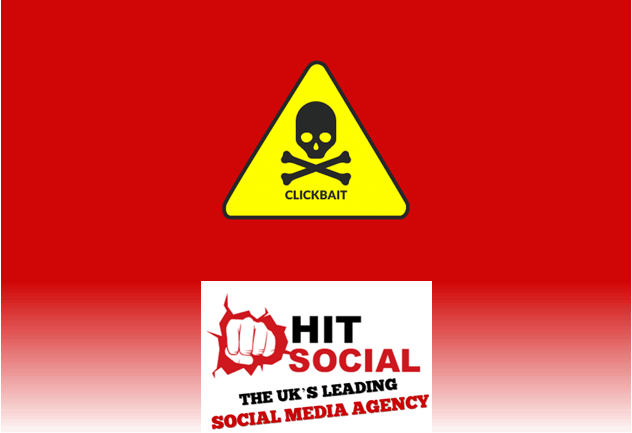Facebook News Feed Algorithm Changes signal End of Click Bait
Facebook recently announced yet more changes to their News Feed algorithm. Set to put an end to ‘Click Bait’, these changes will impact the distribution of brand content and may mean loss of traffic to some, while others may see their referrals increase.
What is Click Bait?
Often accompanied by titles like ‘What happens next is amazing’ or ‘You’ll never believe what this guy does next’, and/ or photos, click bait is basically the sharing of links enticing users to click without actually telling them what the post/ article linked to is about. Because users can’t resist clicking on these links to find out what it’s all about, this kind of content has, up to now, been highly successful.
Click Bait, News Feeds and Users
As Facebook determines what content will be seen by users by observing engagement signals, News Feeds have been taken over by click bait articles. Designed to induce more users to click on links, see stories and subsequently click on them, click bait does, however, result in many leaving dissatisfied.
What’s more, it stops users from seeing the kind of content they actually wish to see, which is obviously not good. After a Facebook user survey revealed that 80{1884f1fad642c0a335e320fbf36199da8501940de449f82beb0b1edf5c3b25f3} of users prefer links with headlines helping them to understand what an article is about, the network decided to make this change – and ignoring it will have a negative impact.
Click Bait Detection
Detecting this kind of link is not so much based on the wording of titles, but whether users get value when clicking on them. This is determined in two ways:
Time away – Facebook will be looking at how much time people actually spend away after clicking on links. If they return within seconds of clicking, it is unlikely that they found something of value to them, whereas staying to read something suggests they found something they wanted.
Engagement – The ratio between clicks on a link and subsequent comments, likes and shares will also be examined.
In essence, links with high numbers of clicks, but little time away and few or no likes, comments and/ or shares will result in the associated content being ranked lower and therefore distributed less.
What this means for Marketers
Many brands clocked on to the fact that colourful photos and catchy headlines generate more clicks. What they missed is that such clicks rarely increase traffic to Websites. Links with content previews, on the other hand, get double the clicks and significantly increase Website traffic.
How individual brands will be affected ultimately depends on whether they share links as recommended (for some time now) by Facebook or ignore the latest (and final) warnings to share content like users do: by sharing entertaining, educational and helpful content without deceit, placing posting methods above their content or chasing algorithms.


